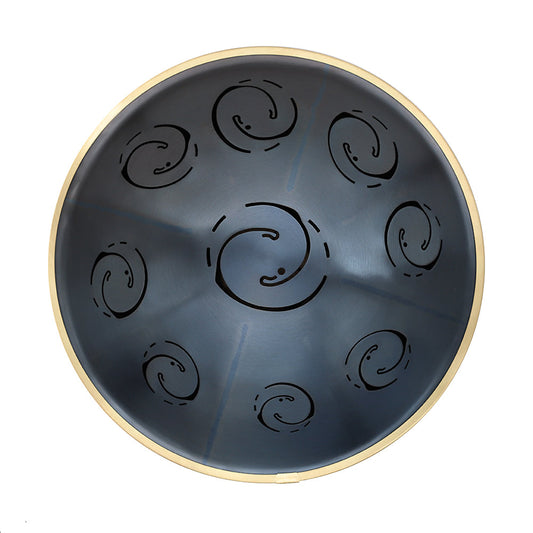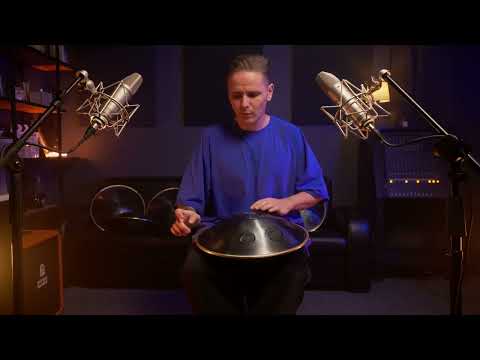Introduction
Music is more than just a sequence of sounds; it’s an art form that touches the heart, influences emotions, and sometimes even impacts physical well-being. In the world of musical frequencies, the debate between 440 Hz and 432 Hz has sparked intense discussion. Many believe that 440 Hz is the universal standard—practical and time-tested. Others argue that 432 Hz has “magical” properties, claiming it resonates more closely with nature’s rhythms. In this article, we’ll explore the history, myths, scientific basis, and advantages and disadvantages of each frequency, as well as their effect on the sound of RAV Vast® instruments.
The History of Tuning Standards
How 440 Hz Became the Standard
The 440 Hz frequency was established as a global standard relatively recently, but its history dates back to the 18th century when musicians used tuning forks. Different orchestras and countries experimented with the pitch for A4, ranging from 420 Hz to 450 Hz. Finally, after years of discussion, 440 Hz was recognized as a standard at an international conference in London in 1939, and in 1955, the International Organization for Standardization (ISO) made it official for tuning musical instruments (source).

The Rise of 432 Hz
Known as “Verdi’s A,” the 432 Hz frequency was referenced in historical documents long before the 20th century. Ancient thinkers like Pythagoras advocated for the “harmony of numbers,” suggesting that 432 Hz aligns with natural vibrations in the universe. Many believe this frequency was used by ancient Egyptian and Tibetan musicians and that it harmonizes with natural rhythms, promoting emotional and spiritual healing (source).

Scientific Facts
Unlike the myths, the facts about 432 Hz are more measured. Research shows that frequency perception is highly subjective and varies with personal preference. Studies confirm that 432 Hz, like other frequencies, lacks mystical or supernatural properties. There’s also no scientific link between 432 Hz and the Schumann resonance, though 432 Hz may indeed sound softer and deeper compared to 440 Hz (source).
The Role of Perception
Regardless of the frequency musicians use, perception depends on individual listener preference. For some, 432 Hz sounds warmer and softer, while 440 Hz appears brighter and crisper. The ultimate choice of frequency may depend on the musician’s mood and purpose.
Check out these example videos for comparison:
Scientific Validity
Studies and Findings
A series of studies conducted by Italian researchers between 2016 and 2020 found that patients listening to music at 432 Hz showed slight reductions in heart rate and blood pressure, hinting at mild relaxation effects. However, scientists agree that these effects are minimal and require further data for conclusive results (source).
Scientific Criticism
As the effect of 432 Hz remains minor and subjective, many researchers believe that the “magic” of 432 Hz is based more on belief than on scientific data. Much of the mythology surrounding 432 Hz lacks scientific backing and may be better explained as cultural preference or personal experience.
The Sound of RAV Vast® in 440 Hz and 432 Hz
How RAV Vast® Sounds at 440 Hz and 432 Hz
On a RAV Vast® drum, tuning to 440 Hz creates a bright, clear tone, ideal for lively performances and modern melodies. This pitch emphasizes the richness and power of the sound, making it well-suited to fast-paced, energetic music.
The 432 Hz RAV Vast®, on the other hand, produces a soft, deep tone perfect for meditation, relaxation, and creating a calming atmosphere. This tone surrounds the listener and performer with a feeling of warm depth, as though each sound is part of a natural landscape. RAV Vast® instruments tuned to 432 Hz are often chosen for sound healing, therapy, and serene compositions.
Advantages of RAV Vast® in 432 Hz
Musicians who choose RAV Vast® in 432 Hz note that the instrument is perfect for personal meditation and creating a harmonious atmosphere. This frequency makes the instrument ideal for those seeking peace, balance, and deep introspection. For those who prefer energetic compositions, the 440 Hz standard may be more suitable, as it provides brightness and strength in sound.

Pros and Cons of Tuning to 432 Hz and 440 Hz
Benefits of 432 Hz
- Harmony with Natural Frequencies: While not scientifically proven, many feel that 432 Hz is in harmony with natural resonances.
- Soft Sound: The 432 Hz frequency is perceived as softer and deeper.
- Ideal for Meditation: This sound creates a calming atmosphere conducive to relaxation.
Drawbacks of 432 Hz
- Not a Standard: As 440 Hz is the accepted standard, 432 Hz may not always be suitable for ensemble play.
- Compatibility Challenges: Compositions in 432 Hz can sound different and may cause tuning issues in group performances.
Benefits of 440 Hz
- Universal Standard: Allows musicians to play in harmony with others and in ensemble settings.
- Clear Sound: The 440 Hz frequency is better suited to energetic, modern compositions.
Drawbacks of 440 Hz
- Personal Perception: Some listeners may find 440 Hz sounds sharper, especially for meditative play.
Conclusion
Tuning frequency is not just a technical aspect but a personal choice for musicians. The 440 Hz standard became widely used for its universality, while 432 Hz is preferred by those seeking a softer, more natural sound. Both options have unique qualities, and the choice depends on your musical style and preferences.
If you’re considering a RAV Vast® instrument, we recommend experimenting with different tunings to find the one that reveals the true essence of music for you. Whatever frequency you prefer, the sound of RAV Vast® will be beautiful in any tuning, inspiring you to create music and discover new horizons.
Interested in learning more about our instruments? Get in touch!









